The snowy owl is a member of the true owl family better known as Strigidae. This gorgeous bird is known by a number of names including Arctic fowl, white owl, and polar owl. It’s large, white, and a relatively heavy member of the owl species.
For the most part, you’ll find this owl in their native Arctic regions. They live in North America and the Palearctic. As far as breeding is concerned, this typically takes place on the tundra. When compared to other extant owls, this creature has unique lifestyle and habitat adaptations.
Right now, I’d like to tell you important facts and other common information that you may or may not already know about the snowy owl. I’m going to discuss a wide range of topics that include the following info:
- Common places for birdwatchers to see snowy owls
- A full discussion of their migratory patterns
- Their nesting habits and behaviors
- Snowy owl identifying characteristics
- Snowy owl feeding preferences and diet
- and so much more
Does this seem appealing? To find out more about these majestic creatures, read below to learn the facts about snowy owls.
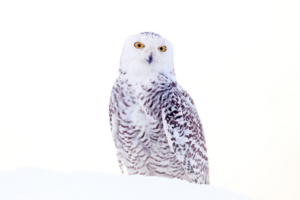
Snowy Owl Bird Facts
- Common Name: Snowy Owl
- Scientific Name: Bubo scandiacus
- Scientific Family: Strigidae
- Life Span: 9.5-10 years
- Size: 20.7 to 25.2 inches
- Wingspan: 46 to 65 inches
- Weight: 46.4 to 88.0 oz
- Conservation status: Vulnerable
How To Identify A Snowy Owl
The best way to identify a snowy owl is to realize that these birds are mostly white in color. But white isn’t the only color that dominates their features. They have various markings of brown or black that can be found on their wings and body.
Other identifying features differ between male and female snowy owls. I’ll share further information about the differences below.
Differences Between Male & Female
As far as mail snowy owls are concerned, they are the really bright white diversions of this bird species. They have large white plumage and their feathers are a much purer white color when compared to their female counterparts.
The males have other identifying features as well. One of the big differences between males and females is that the older the male polar owl gets, the whiter his feathers and plumage become.
The female snowy owls have more brown and black spots in extensive flecks on their wings and body. These flecks of color give female polar owls much more of a salt and pepper look and appearance.
Lastly, both male and female snowy owls have yellow eyes.
Fun fact: yellow eyes signify that these owls tend to remain active in the day and sleep at night, which is the opposite of most owls who remain active at night and sleep during the day.
Some common owls with yellow eyes include:
- Great Horned Owl
- Snowy Owl
- Burrowing Owl
- Great Gray Owl
- Short-Eared Owl
- Northern Saw-Whet Owl
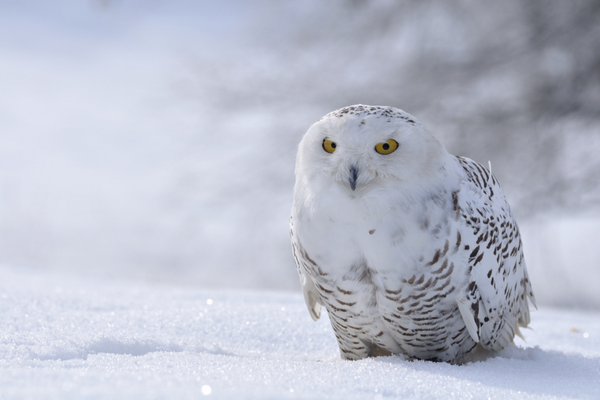
Related article: Barn Owl: Bird Identification, Habits, Facts, Nesting
Differences In Summer Plumage vs Winter Plumage
Since this bird remains in cold environments, they really do not have a reason to change colors throughout the year. Their feathers remain white all year long.
Why? Their white feathers provide them with a major advantage. Believe it or not, by having reflective white feathers, the white color technically acts as a beacon to other animals and competitors. Their weight reflection signals that other animals are reaching the edge of their territory and they should steer clear.
Where You’ll See A Snowy Owl
Many of our readers enjoy viewing these creatures in the wild. Yet, their migrations vary tremendously, but they tend to stick to the same colder regions nonetheless.
The North American snowy owls tend to spend their winters in southeastern Canada in North America. In the United States, they tend to stick to New England states and the upper Great Lake states near Canada.
During the winter in the United States, the number of these owls in the region will peak periodically. Many people attribute this to the lemming cycles taking place farther in the North in Canada.
Snowy Owl Migration Patterns
Their migrations encompass extreme variables. But it’s important to know that most of the time when you see them in the lower 48 states, they will be there during an irruption.
What is an irruption? It’s “An irruptive migrant is a species that usually migrates short distances at the most, but occasionally moves far south in very large numbers. The reason for these unique migrations is not straightforward, and researchers have found that the causes vary with the species.”
Something will happen to cause this species to migrate into the lower 48 states from time to time, but it isn’t a regular occurrence.
More often than not, owl irruptions happen because they are experiencing a lack of food. In other cases, they may be experiencing such an abundance of food during the winter that they are acting more productively because of the extra fuel and energy available to them.
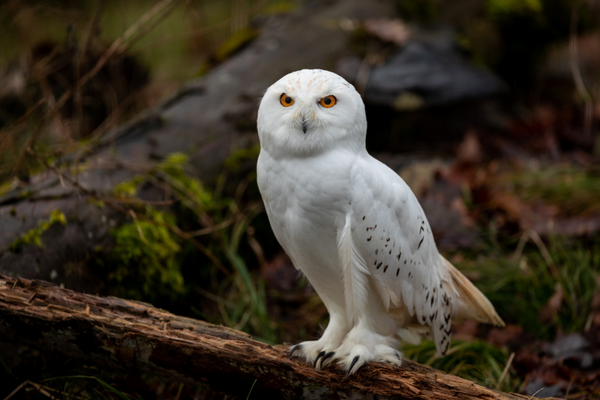
Diet and Feeding Preferences
The most important thing to know about these owls is that they are carnivores. They feed on small mammals and a wide variety of different small animals. Some of their favorite small animals to prey on include deer mice, meadow voles, gophers, and lemmings.
They are relatively aggressive creatures and they will also attack larger prey when they have an advantage. They have been known to feast on moles, rats, rabbits, prairie dogs, marmots, raccoons, muskrats, squirrels, and hares.
To all the folks with bird feeders, I regretfully inform you that they aren’t going to visit your feeders anytime soon. They like to hunt and they are carnivorous mammals as mentioned above.
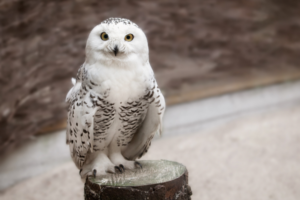
Snowy Owl Nesting Facts
- Clutch Size: 3-11 eggs
- # of Broods: 1 brood
- Incubation Period: 32 days
- Nestling period: 18-25 days
- Egg Description: White
During nesting, the female snowy owl is the partner to build the nest. She accomplishes this by scraping out a hole or hollow on the ground. She will shape this depression by squeezing her body into the hole.
It takes a few days for female snowy owls to create their nest. Unlike many other birds, these owls will come back to this nest site for many years and reuse the nest that the female created.
When snowy owls are hatched, they are born wet and blind. It takes roughly 5 days for these owls to finally open their eyes after birth. These beautiful little owls are snowy white fluff balls of soft downy feathers just hours after being born and they are very beautiful creatures.
Typically speaking, a female snowy owl will produce anywhere from 3-11 eggs and have one brood per season. The incubation period takes roughly 32 days and the overall nesting. Takes anywhere from 18 to 25 days in total before the birds finally hatched.
Snowy owl eggs are white in color. They have no other distinguishing marks or features.
Snowy Owl Behavior
The snowy owl lives a very territorial and solitary life, so it doesn’t tend to socialize with other birds including the birds in its own species.
Male snowy owls are expected to defend their territory and they certainly will. This is very true during breeding season when the female snowy owl is incubating her future hatchlings.
Snowy owls tend to stick to smaller territories when possible. This usually happens when they have plenty of food available within a small territory. They would prefer to hunt in a smaller area whenever it’s possible.
On the other hand, if there isn’t too much food available for these beautiful and majestic creatures, they will certainly expand their territory into a much larger area. Female snowy owls are even known to defend their hunting territories during the winter when food is most scarce.
Snowy owls are not aquatic birds, so when they finally do take a bath they tend to do so in an effort to keep their feathers clean. At first, a snowy owl will approach the water and dunk her face to wash it off.
Eventually, the snowy owl will submerge its entire body into the bath and shake its feathers up and down to properly clean itself off. After it’s completely clean, the owl will shake out its entire body to remove any excess water before retreating to dryland once again.
Tips for Birdwatchers On How To Attract Snowy Owls
If you live in New England or the upper Great Lakes states, your best bet at seeing snowy owls in the wild is during the afternoon.
Experts say that it’s probably best to stay 1000 feet away from these creatures because they’ll begin to get nervous at closer distances. But at the same time, you may be able to stay 100 feet away from them without scaring them off. It’s up to you to effectively test the limits and hopefully, you will not scare off the owl in the process.
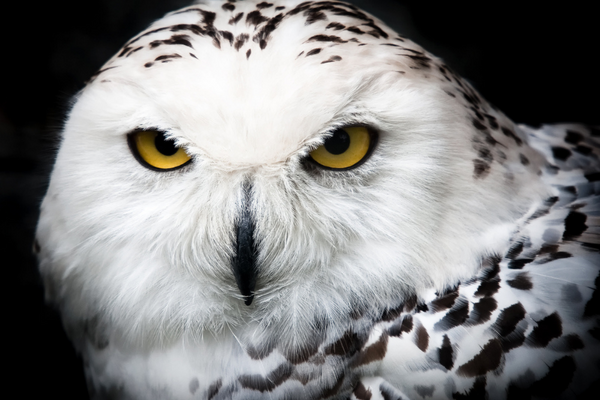
Conservation Status
The snowy owl is currently classified with a Vulnerable (VU) conservation status.
What does this mean? Unfortunately, it means the snowy owl is at an extremely high risk of becoming extinct in the wild. This is an endangered species and its likelihood of continued survival is in imminent danger.
Fun & Interesting Facts
- Snowy owls possess a tremendous number of feathers. They need these feathers to act as insulation to keep them warm while living in Arctic temperatures.
- Snowy owls have bristles on their beaks. These bristles are there to help them sense objects when they are nearby. Their beaks are hooked to easily tear flash and grip prey.
- Snowy owls have the ability to swallow the smallest variety of their prey whole. They will often swallow mice, voles, and lemmings entirely. They also eat seabirds, ducks, and Arctic hares.
- Female snowy owls remain with their young after they are hatched. The males are hunters during this time and they bring the food to the females to feed it to the owlets.
- The average wingspan of a snowy owl is 4-5 feet. They have powerful wings that give them the ability to quickly sneak up on their prey as silently as possible.
- Male snowy owls have feathers that are nearly completely white. Female polar owls, on the other hand, have dark salt-and-pepper flecks within their white plumage.
- Snowy owls are forced to hunt during the daylight in the Arctic summer. Many owls are nocturnal creatures yet snowy owls are considered diurnal.
Explore More Species in This Family
- Western Screech-Owl
- Eastern Screech-Owl
- Northern Hawk Owl
- Elf Owl
- Northern Pygmy-Owl
- Great Horned Owl
- Burrowing Owl
- Great Gray Owl
- Short-Eared Owl
- Long-Eared Owl
- Northern Saw-Whet Owl
- Boreal Owl
- Spotted Owl
- Barred Owl
- Flammulated Owl
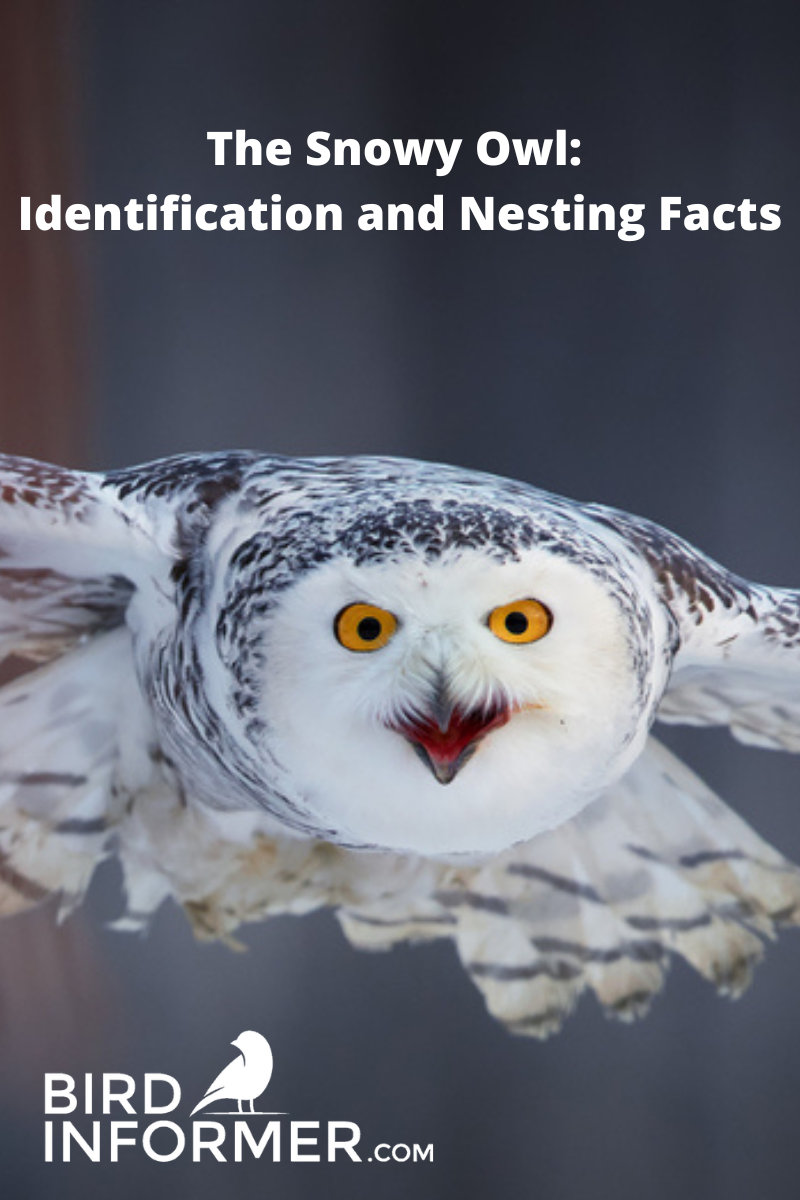
from BirdInformer.com https://ift.tt/7FXJS2Q

No comments:
Post a Comment